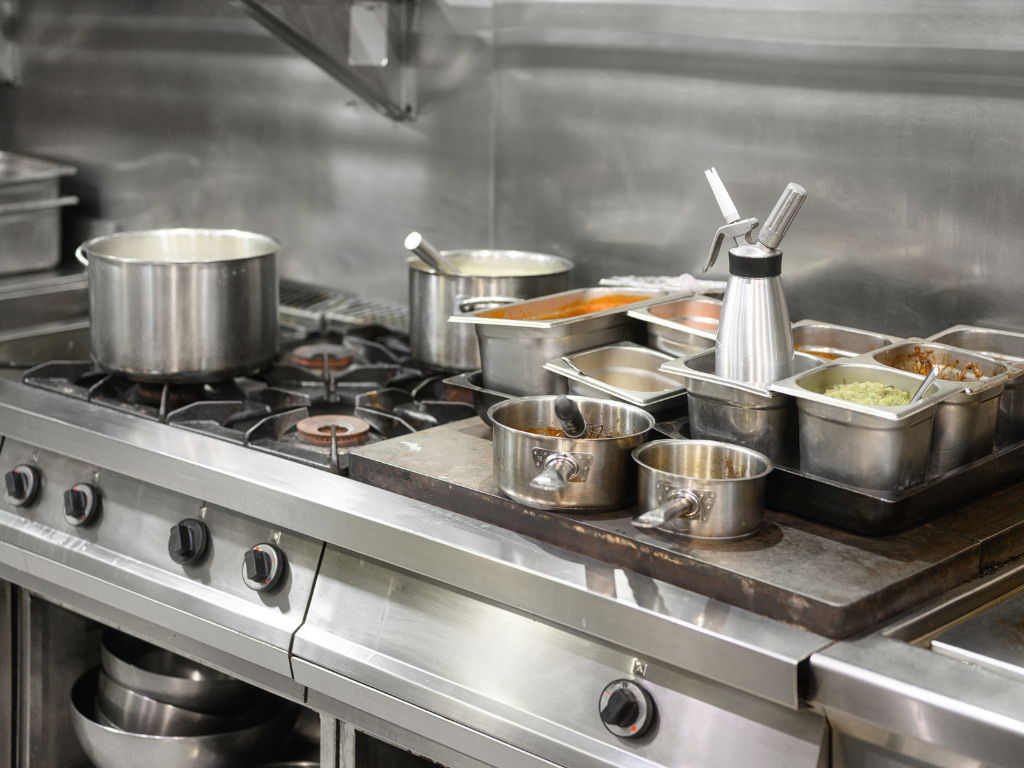Commercial kitchen equipment represents a significant investment for many businesses. Therefore, ensuring their longevity and efficient performance becomes crucial. Regular maintenance not only prolongs the lifespan of your appliances but also ensures safety and can significantly reduce operational costs. This article will delve into two primary aspects: regular cleaning routines and troubleshooting common equipment problems.
Regular Cleaning Routines for Longevity
Commercial Ovens: Dirt and food particles can accumulate in commercial ovens over time, reducing their efficiency and potentially affecting the taste of the food. To maintain them: Remove and clean oven racks with warm soapy water. Wipe the interiors after each use. For stubborn residues, specialized commercial oven cleaners can be utilized.
Commercial Fridge: It’s imperative to keep commercial fridges clean to prevent bacteria growth. Remove all items and wipe down shelves weekly. Check the door seals to ensure they’re clean and tight. At least once a month, vacuum and wipe the condenser coils.
Commercial Deep Fryer: Oil residue can affect the taste of fried items and reduce the lifespan of your fryer. Change the oil regularly. Clean the fryer with a mixture of vinegar and water to eliminate bad odours. Ensure the external surfaces are wiped down after use.
Commercial Ice Machines: To avoid bacterial growth and ensure your ice remains fresh:
Empty, clean, and sanitize the machine every six months. Check for scale buildup and use a descaler if necessary.
Commercial Mixers: Dough and batter can harden and become difficult to remove. Always remove attachments and clean them separately. Wipe down the mixer after each use.
Crepe Makers and Electrolux Dishwasher: While crepe makers should be cleaned after each use to prevent batter residue, commercial dishwashers like Electrolux need weekly check-ups. Ensure that the dishwasher arms spin freely, and regularly check for clogs.
Troubleshooting Common Equipment Problems
Commercial Fridge Not Cooling: The most common reasons include dirty condenser coils, malfunctioning thermostat, or a faulty compressor. Always check the power supply and ensure it’s not placed in direct sunlight.
Commercial Ovens Not Heating: It might be due to a faulty igniter, thermostat issues, or problems with the heating element. Regularly check the oven door seals to ensure heat retention.
Commercial Ice Machine Not Producing Ice: Possible issues could be a broken water valve, clogged filter, or malfunctioning thermostat. Ensure the machine isn’t near heat sources.
Electrolux Dishwasher Not Cleaning Dishes Properly: It might be due to clogged spray arms, a malfunctioning pump, or using the wrong type of detergent.
Commercial Deep Fryer Not Heating: It could be due to electrical problems, thermostat malfunctions, or issues with the heating coil.
Equipment Essentials in Commercial Kitchen Equipment
Every successful restaurant or food service business heavily relies on the efficiency and functionality of its kitchen. Commercial kitchens are vibrant, bustling environments that require top-tier equipment to handle the demanding pace. Let’s delve into some essentials and understand the dynamics of different types of commercial kitchens.
What Equipment is Used in a Commercial Kitchen?
A commercial kitchen is packed with a variety of equipment, each tailored for specific tasks:
Cooking Equipment: This includes ranges, ovens, commercial deep fryers, crepe makers, grills, and broilers.
Refrigeration Units: Commercial fridges, freezers, and blast chillers ensure food is stored safely.
Beverage Machines: From commercial coffee machines to blenders, beverages are a significant part of many meals.
Dishwashing Equipment: Brands like Electrolux offer commercial dishwashers that can handle a high volume of dishes with efficiency.
Preparation Equipment: This consists of commercial mixers, food processors, blenders, and slicers.
Food Holding and Warming Equipment: Keep dishes at the optimal temperature with food warming equipment.
Storage Solutions: Shelving units, bins, and storage containers help in organizing ingredients and tools efficiently.
What are the 5 Types of Commercial Kitchens?
Assembly Line Kitchens: Common in fast-food chains, the design prioritizes efficiency, allowing for quick assembly of dishes.
Island Kitchens: Centralized with the main piece of equipment, like an oven or grill, surrounded by other equipment.
Zone-Style Kitchens: Divides the kitchen into different areas or zones, each dedicated to a particular type of task.
Open Kitchens: Promote transparency with customers, allowing them to see the preparation process.
Galley Kitchens: Often found in smaller spaces, equipment and stations are set up on parallel walls.
What are Some Cooking Equipment?
Apart from the basics like ovens and stoves, a commercial kitchen often houses:
- Sauté Pans: Essential for frying, searing, and browning foods.
- Braising Pans: These are used to brown, then simmer dishes.
- Stock and Sauce Pots: Ideal for soups and sauces.
- Griddles: Flat surfaces used for pancakes, burgers, and other foods.
- Charbroilers: Give foods a distinctive charred texture and smoky flavor.
- Steamers: Cook food with steam, maintaining nutrients and avoiding oil.
Commercial kitchens are a symphony of various equipment pieces working in harmony. Whether you’re a restaurant owner or an enthusiast wanting to understand the back-end of your favorite eatery, recognizing the equipment and their dynamics is enlightening. At the heart of these operations is efficient, high-quality equipment that ensures every dish is a masterpiece.

